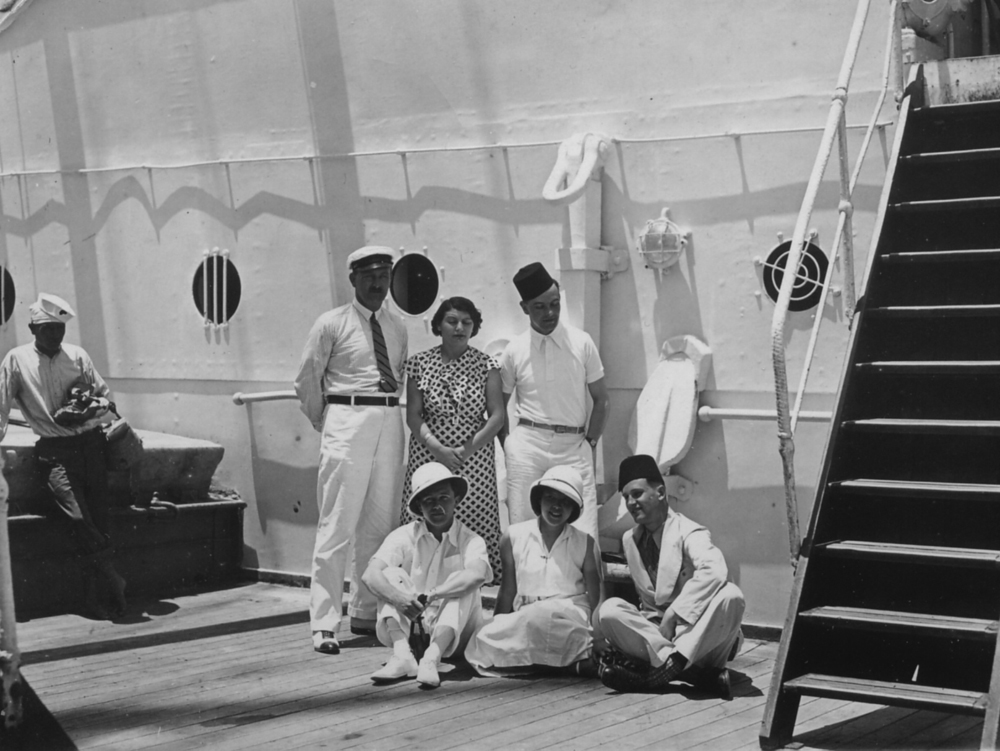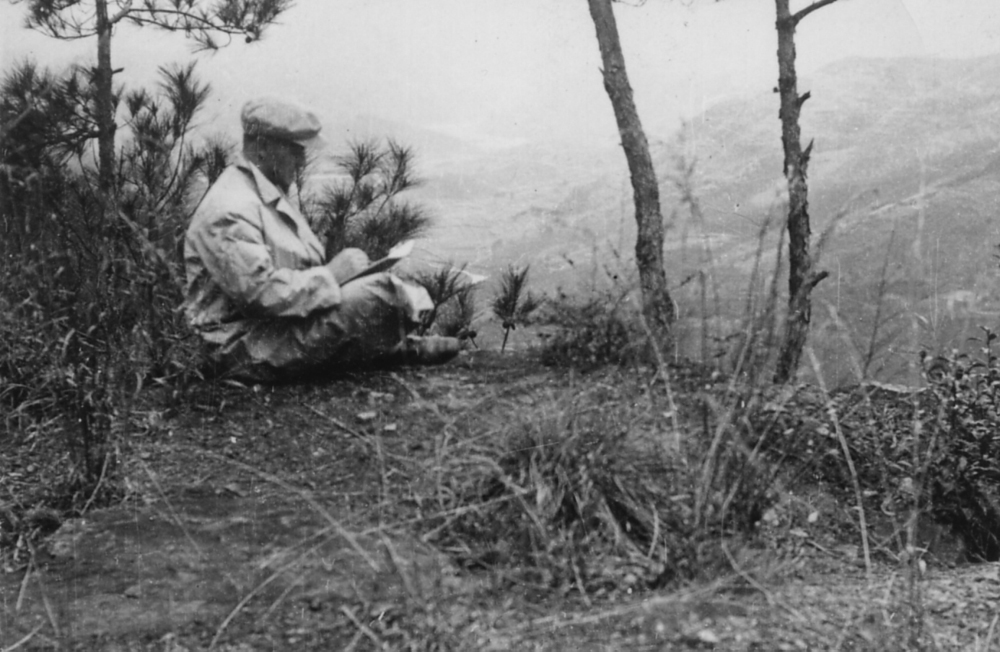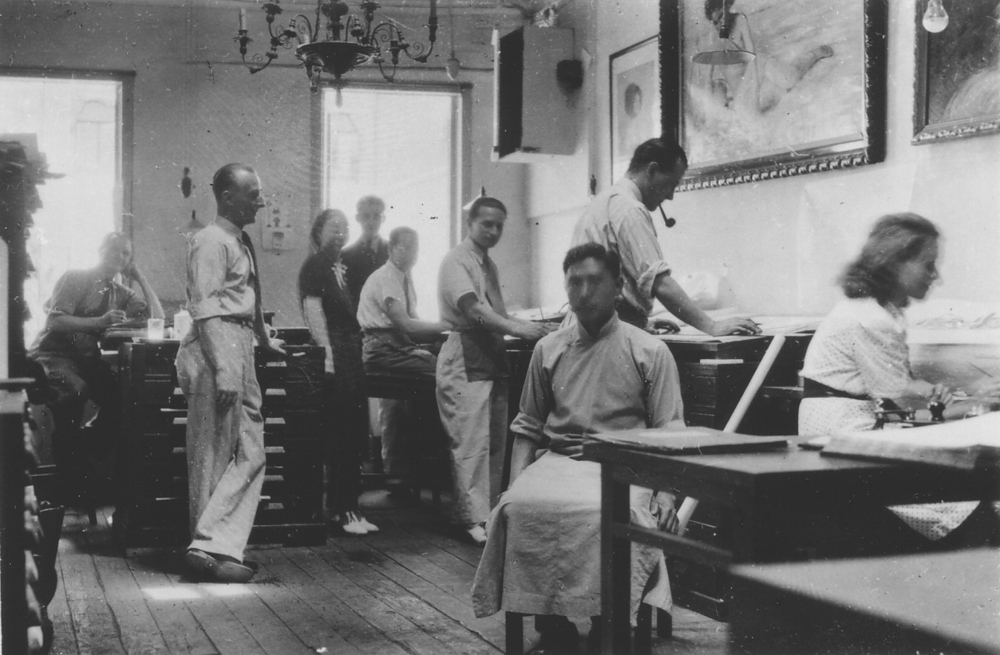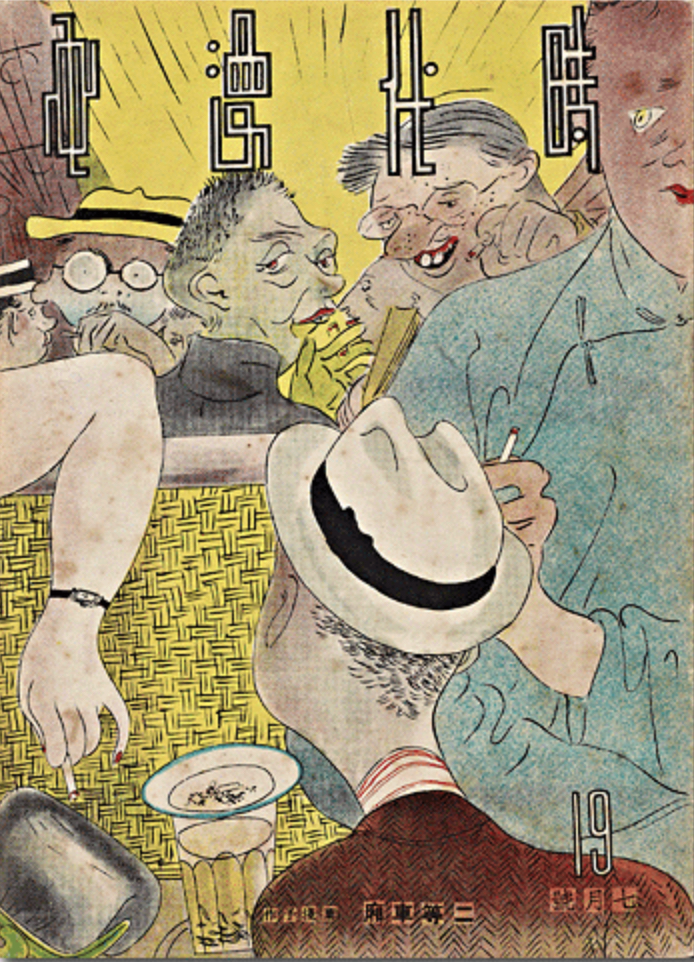Archive
Richard Paulick
- Richard
- Paulick
Peter Winslow
- 07-11-1903
- Roßlau (DE)
- 04-03-1979
- Berlin (DE)
- ArchitectDesigner
After studying with Hans Poelzig, Richard Paulick worked in Walter Gropius’s office and frequented the Bauhaus in Dessau before emigrating to Shanghai in 1933. After his return, he became an influential planner and architect in the GDR, from 1950 until his retirement
Word Count: 41

Richard Paulick on board ship, en route to exile, photography, 1933. (© private archive, courtesy of Natascha Paulick). 
Richard Paulick on a weekend boat trip around Shanghai, photography (© private archive, courtesy of Natascha Paulick). 
Richard Paulick sketches in the landscape, photography (© private archive, courtesy of Natascha Paulick). 
Richard Paulick (with a pipe) in his office. His brother Rudolf is standing in front of the plan cupboard, photography (© private archive, courtesy of Natascha Paulick). 
Ye Qianyu, cover print, The Second-class Rail Carriage, Modern Sketch, July 1935. Eduard Kögel: Ein Knoten im Netz. Richard Paulick in Shanghai, by Burcu Dogramaci; Karin Wimmer (Hg.): Netzwerke des Exils. Künstlerische Verflechtungen, Austausch und Patronage nach 1933. Berlin: Gebr. Mann Verlag 2011 p.223–241.
Kögel, Eduard. "The Glamour Boy of Hongkew, Emigration und Politik – Richard Paulick in Shanghai (1933–1949)." Bauhaus Tradition und DDR Moderne. Der Architekt Richard Paulick edited by Thöner, Wolfgang and Peter Müller, Deutscher Kunstverlag, 2006.
Thomas Flierl, editor. Bauhaus Shanghai Stalinallee Ha-Neu. Der Lebensweg des Architekten Richard Paulick 1903–1979,Lukas Verlag, 2020.Word Count: 82
Shanghai (1933–1949)
Modern Homes, Bubbling Well Road, International Settlement (now Nanjing Xi Lu, Huangpu Qu) Shanghai
- Shanghai
- Eduard Kögel. "Richard Paulick." METROMOD Archive, 2021, https://archive.metromod.net/viewer.p/69/2952/object/5138-11304819, last modified: 15-09-2021.
-
David Ludwig BlochArtistShanghai
David Ludwig Bloch is known for his paintings and watercolours revolving around the Holocaust and his exile. With the woodcuts from his time in exile in Shanghai, Bloch created an artistic account of everyday life in the city, while harvesting the simplicity of form and colour of the medium.
Word Count: 49
Friedrich Hermann SchiffArtistCartoonistDesignerShanghaiFriedrich Schiff was an Austrian-born artist who went to Shanghai in 1930. He became known for his humorous cartoons, which were enjoyed by the colonial bourgeoisie.
Due to his Jewish origins, he was unable to return to Austria after Hitler’s annexation of Austria in 1938. He left Shanghai for Buenos Aires in 1947.Word Count: 51
Hans JacobyArtistShanghaiHans Jacoby fled in 1938 to the Netherlands, where he was interned by the Dutch government in Hook of Holland. He was able to leave the camp and arrived, together with his wife Emma Jacoby, in Shanghai in 1940 where he continued to work as an artist.
Word Count: 45
Emma BormannArtistShanghaiEmma Bormann was a pioneering artist and printmaker. Her oeuvre gives witness to her extensive travels around the globe and to the agility and versatility of her artistic rendering of the urban sites she encountered.
Word Count: 35
Lyceum TheatreBuildingShanghaiThe new Lyceum Theatre was designed in an eclectic style by British architects Davies & Brooke and opened on 5 February 1931.
Word Count: 20
Voice of ChinaMagazineShanghaiSong Qingling, widow of the founder of the republic, Sun Yatsen, supported the political magazine Voice of China in 1936, which appeared in Shanghai in English. After the Japanese army invaded China in August 1937, the magazine had to cease publication.
Word Count: 39
Shanghai LifeBookShanghaiShanghai Life was the first book published by the newly-founded Shanghai Cartoonist Club (March 7, 1942). The club held its first exhibition in June of the same year, at the Shanghai Art Gallery on Nanking Road (now Nanjing Dong Lu).
Word Count: 38
Hubertus CourtPrintShanghaiThe print was made by the artist Emma Bormann during her exile in Shanghai in the 1940s.The title suggest that the print offers a bird’s eye view from the Hubertus Court building.
Word Count: 34
Association of Jewish Artists and Fine Art Lovers (ARTA)AssociationShanghaiSeven Jewish artists living in the so-called Shanghai Ghetto joined together to form an art association in 1943. The founding members were: David Ludwig Bloch, Paul Fischer, Fred Fredden Goldberg, Ernst Handl, Max Heimann, Hans Jacoby and Alfred Mark.
Word Count: 38
St. John’s UniversityUniversity / Higher Education Institute / Research InstituteShanghaiIn the first half of the 20th century, St. John’s University in Shanghai was an important Protestant university under American leadership. During the 1940s, German emigrants also taught there, after British and American university lecturers were interned in the wake of the Japanese attack on Pearl Harbor.
Word Count: 48
Modern HomesArchitecture and Furniture CompanyShanghaiThe three firms The Modern Home, Modern Home and Modern Homes existed from 1931 until 1950. Run by the Paulick brothers together with the Jewish emigrant Luedecke, the firms provided work for many emigrants.
Word Count: 32
Photo WillingerPhoto StudioShanghaiBefore their emigration to China in 1938, Margarete and Wilhelm Willinger ran several successful photo studios and agencies in Berlin (until 1927), Budapest and Vienna. Their son was the photographer Laszlo Willinger.
Word Count: 30
Agnes SmedleyWriterJournalistShanghaiAgnes Smedley was an American journalist, writer and activist. Between 1929 and 1941, she lived in China, where she wrote reportages for European and American newspapers. As a feminist and socialist writer, she focused on the concerns of rural people and paid special attention to artists and their work during the Chinese revolution.
Word Count: 51
Exhibition of prints by Käthe KollwitzExhibitionShanghaiA German woodcut exhibition organised at the Zeitgeist Bookstore presumably took place in June 1931. In June 1932. A further exhibition with more than 200 works by German artists, including works by Käthe Kollwitz and George Grosz, was shown at the Chinese Y.M.C.A.
Word Count: 44